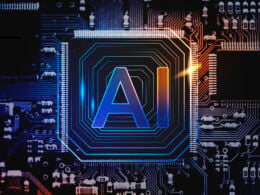You’ve spent the majority of 2020 being told that you must adapt to the pandemic’s new economic landscape in order to stay afloat. Acknowledging this fact is easy: putting it into action in a way that promotes long-term business success, that’s the hard part.
While companies across the globe were forced to lay off staff and cut expenditures when the crisis hit, many missed an opportunity to creatively augment or repurpose their existing offerings to serve a new audience and solve a new problem.
At Talview, we did exactly that. We discovered a newly expanded market for e-learning solutions, and identified the ways in which our own core virtual recruitment technology could fit into remote educational environments.
Repurposing your existing product is an excellent way to quickly adapt to current and future crises. Here’s how you can make sure your new offering can provide long-term value, and not just act as a short-term solution.
StartupNation exclusive discounts and savings on Dell products and accessories: Learn more here
New products must align with your mission and vision
At Talview, our company vision is to enable everyone to build the best career for themselves, no matter where they’re located. While our original focus has been on allowing companies to transcend traditional barriers and take hiring online, with the advent of the pandemic, we realized that there was a similar need for remote learning solutions. We also realized that our existing AI-enhanced technology could power a platform which remotely proctors university exams for off-campus students.
As such, creating an effective, innovative and accessible way for students to continue learning virtually is in-line with our core mission and vision of breaking down barriers to opportunities for growth.
Whatever new product you decide on in order to adapt to changing circumstances, it must first and foremost be able to form part of your company’s core values.
This will also make it easier to get the rest of your team on board and embrace this new direction. In fact, mission-driven team members perform better and stay at the company longer than those only motivated by their paychecks.
Product-founder fit is essential, too. Any new offering must fall within the interests of the company. Are you passionate about this product and the market it fits into?
If you don’t enjoy spending time in this market, or do not have relevant experience, it’s going to be more difficult building and sustaining a meaningful project. Once you’ve established that your new idea is aligned with your core mission and has founder-fit, it’s all about looking at the larger trends.
Related: What Makes Pop-Up Retail a Viable Option During a Pandemic?
Long-term market prospects are just as important as usual
Crises change market circumstances and customer demands, but unless you are desperately strapped for cash, you need to make sure your new product has long-term relevance. This means conducting research on how your solution fits into current demands and the future of the market.
For example, while many educational institutions were forced into adopting solutions to deliver courses digitally, e-learning will continue to be a growing trend into the future, which holds a number of benefits in terms of increasing accessibility and affordability of education. Even before the pandemic, the e-learning market size was predicted to grow at 8 percent CAGR (Compound Annual Growth Rate) between 2020 and 2025, to value $315 billion by 2025.
When it comes to tech, any market trends that you’re investing in must already have tailwind to be successful. This could be an established sector driving forward innovation, or an industry where numerous other players are creating adjacent products. You need to be able to service an existing need, replace existing technology, or create something that will become a vital part of wider trends.
Sign Up: Receive the StartupNation newsletter!
Leverage your core technology base
Finally, if you’re seeking to augment or repurpose your existing product to quickly adapt, you need to make sure you already have the necessary core capabilities to support it. Building digital products from scratch can take years, but if you already have the foundations, you can pivot and launch quickly.
For example, during the pandemic, cosmetics companies such as Nivea and LMVH began manufacturing hand sanitizer to meet growing demand, while household appliance manufacturer Dyson developed ventilators with its air compression technology.
However, this innovation doesn’t just apply to crises as unique as COVID-19; circumstances can change unexpectedly at any time, and acting fast to cater to new consumer demands will help you stay on a path to growth. By building on your existing core tech, you can spend less time worrying about creating products from the ground up and more time focusing on the ways in which you will service new customers and build a presence in a new market.
Ultimately, any new offering should be something that excites you and your team, doesn’t add excess workload and stress onto employees, and is undergoing an increase in demand in its respective market. And by keeping short-term adaptability in-line with long-term market prospects, you’ll be able to use it as a key contributor to business growth.






